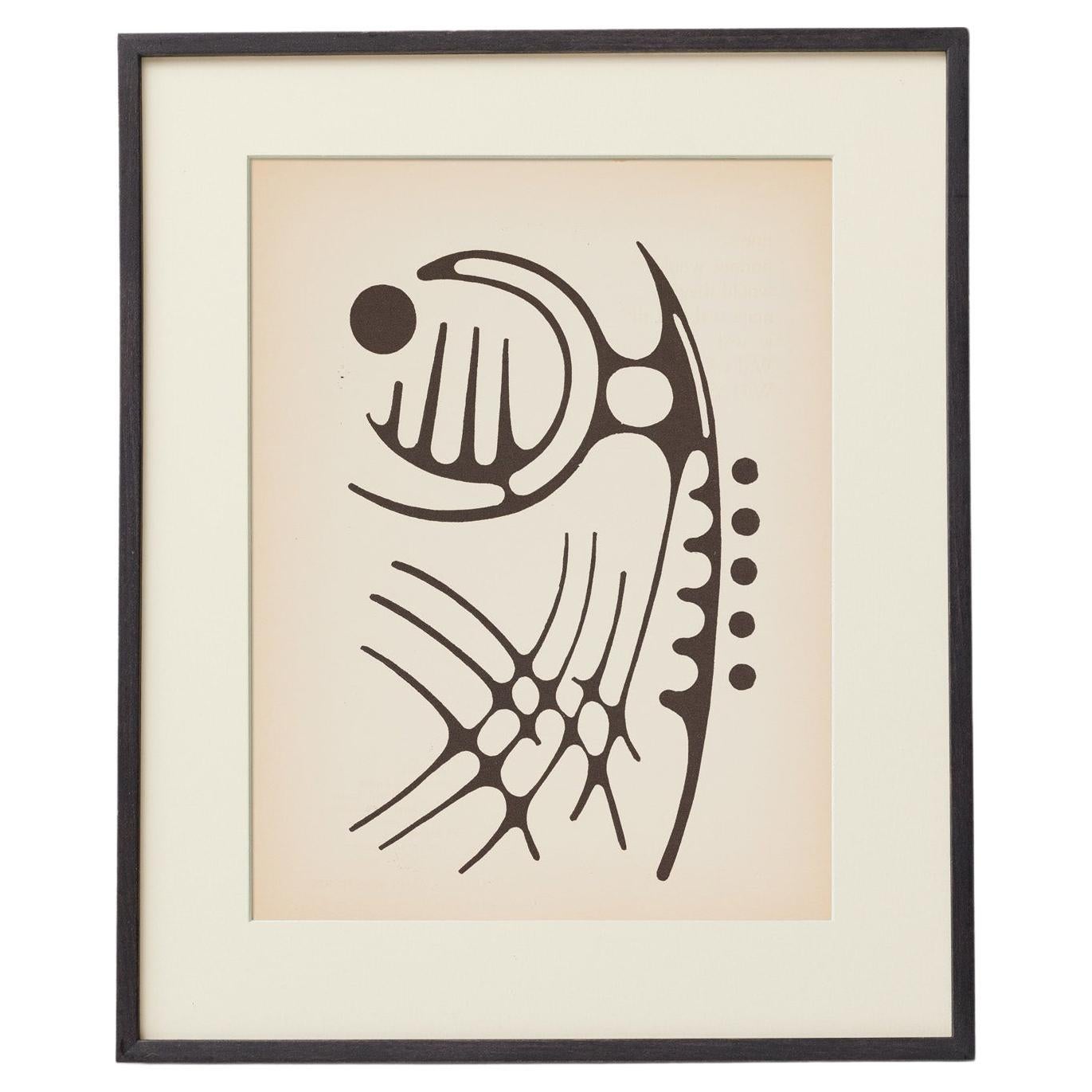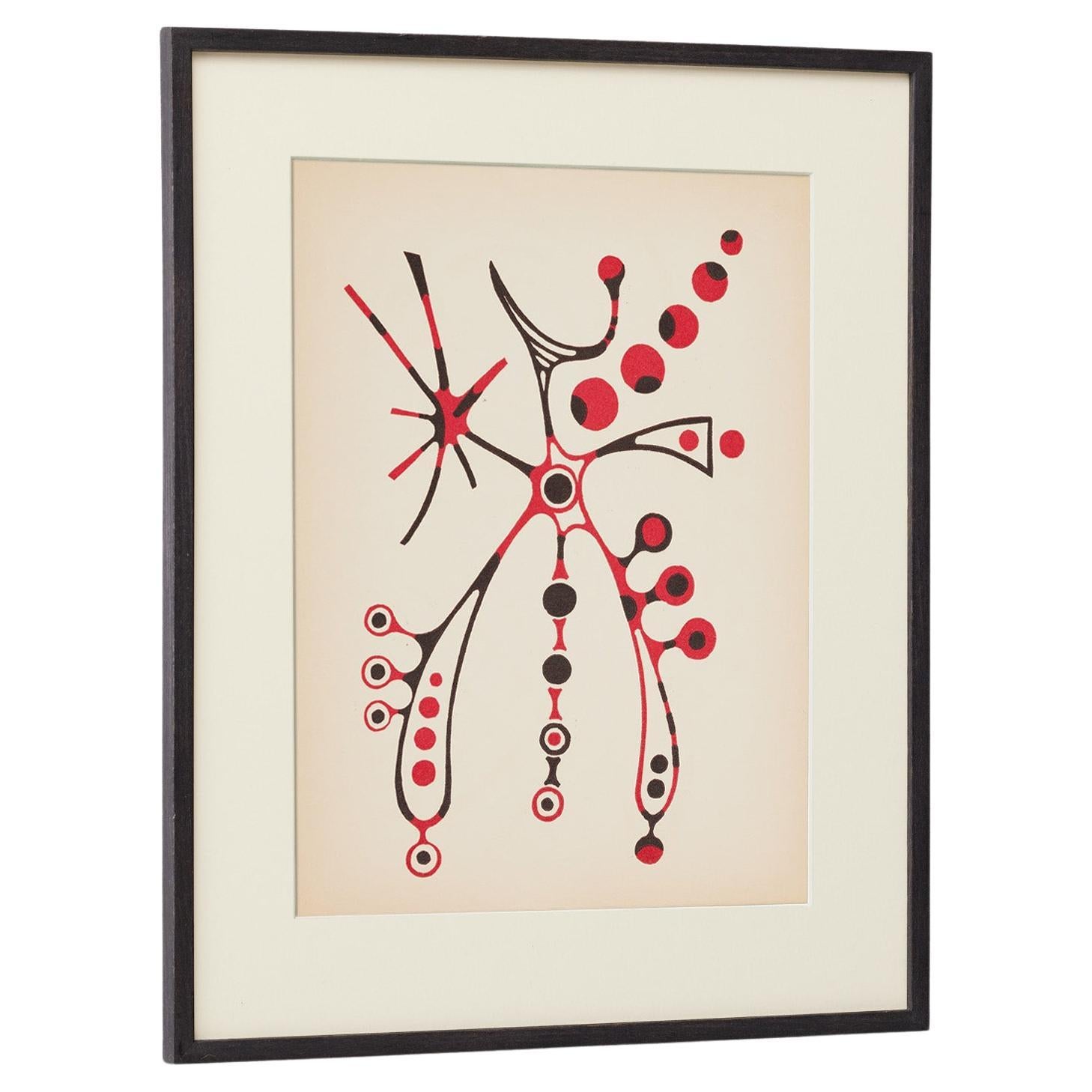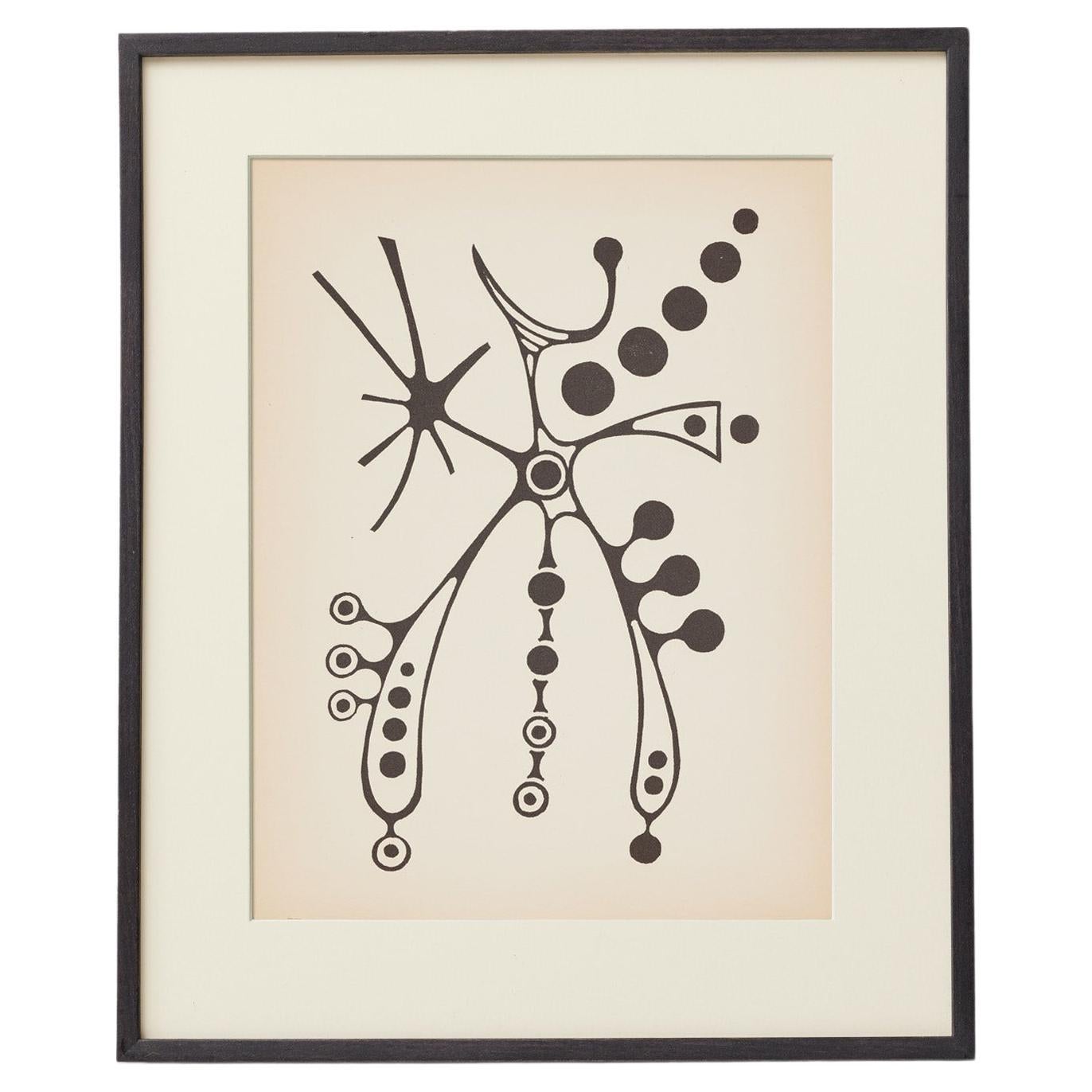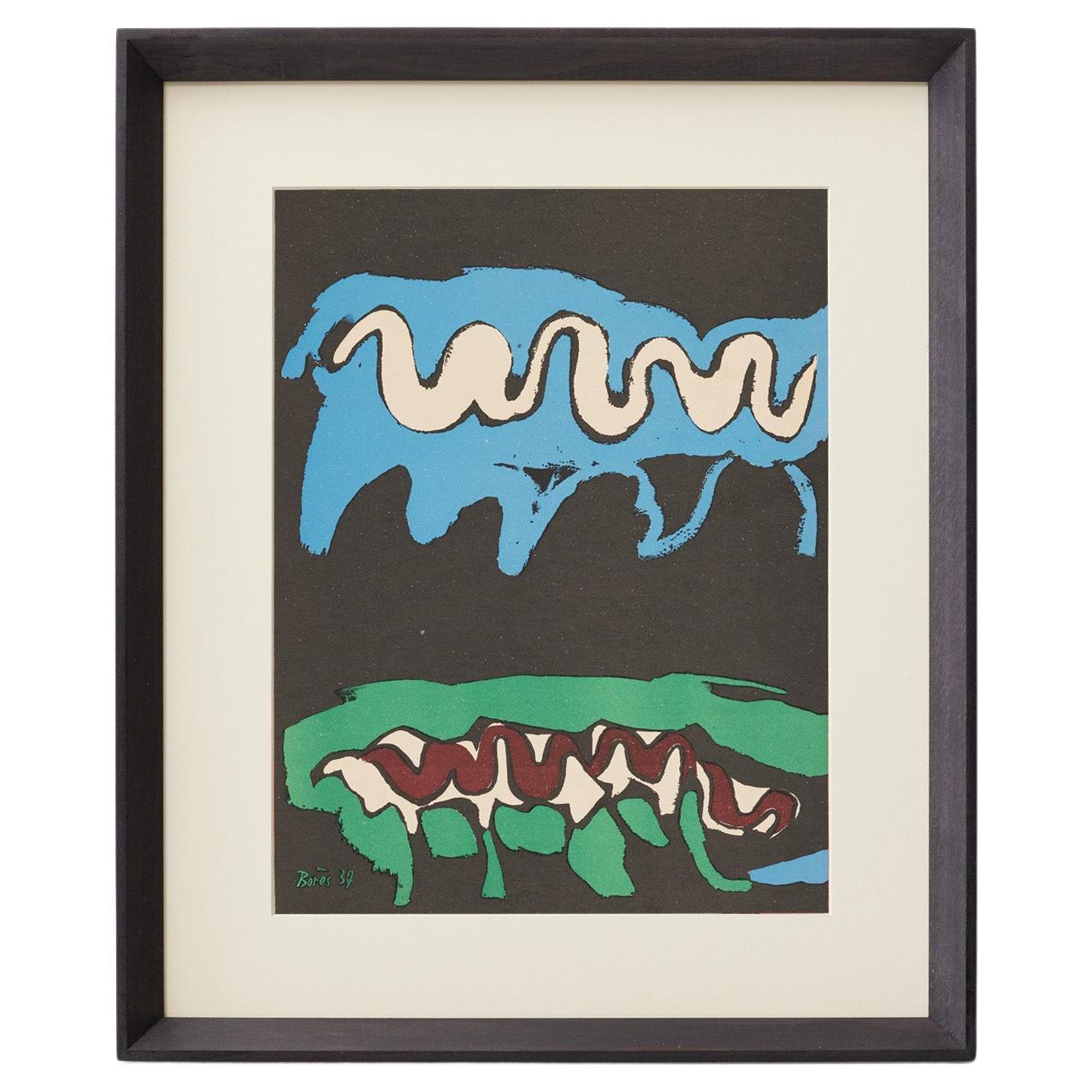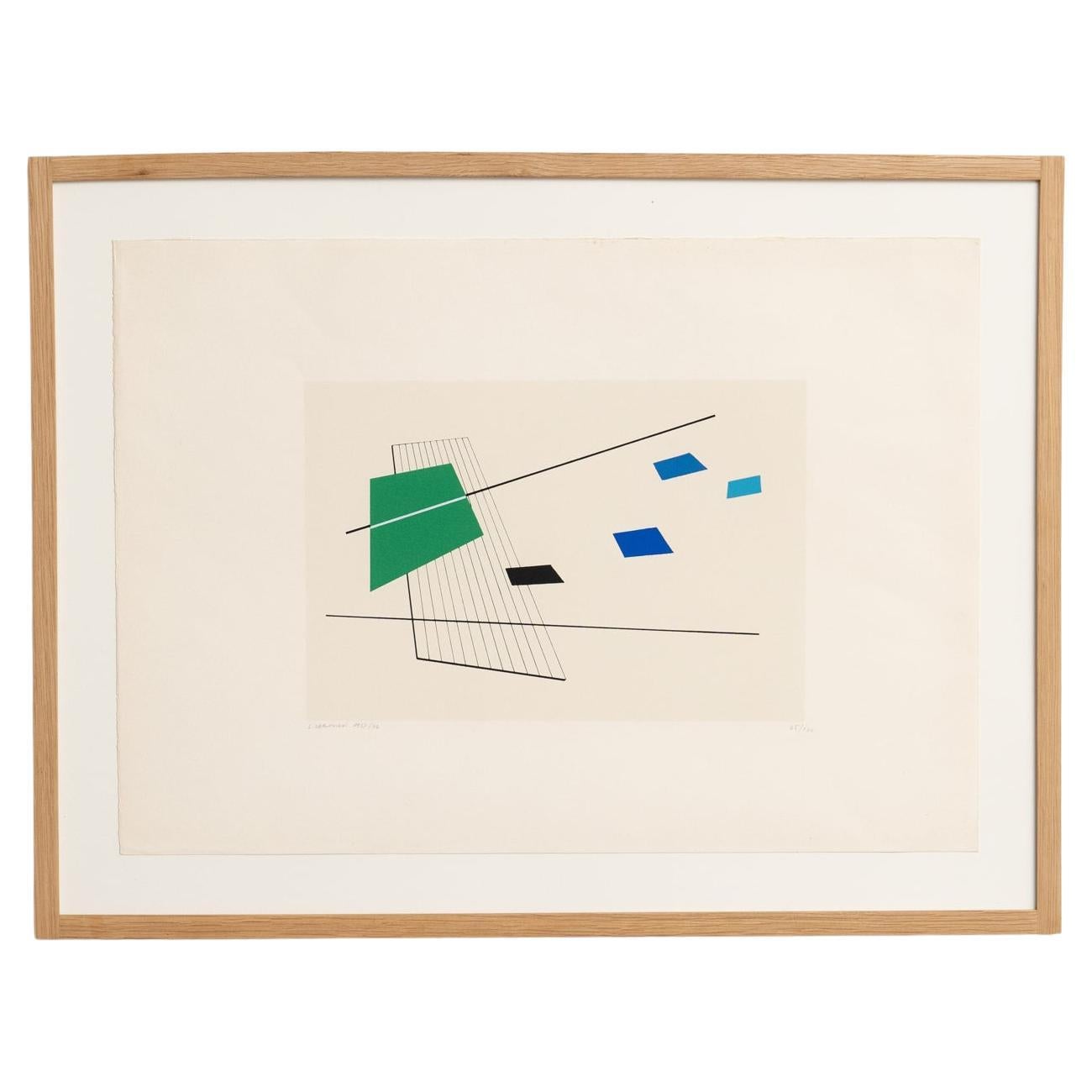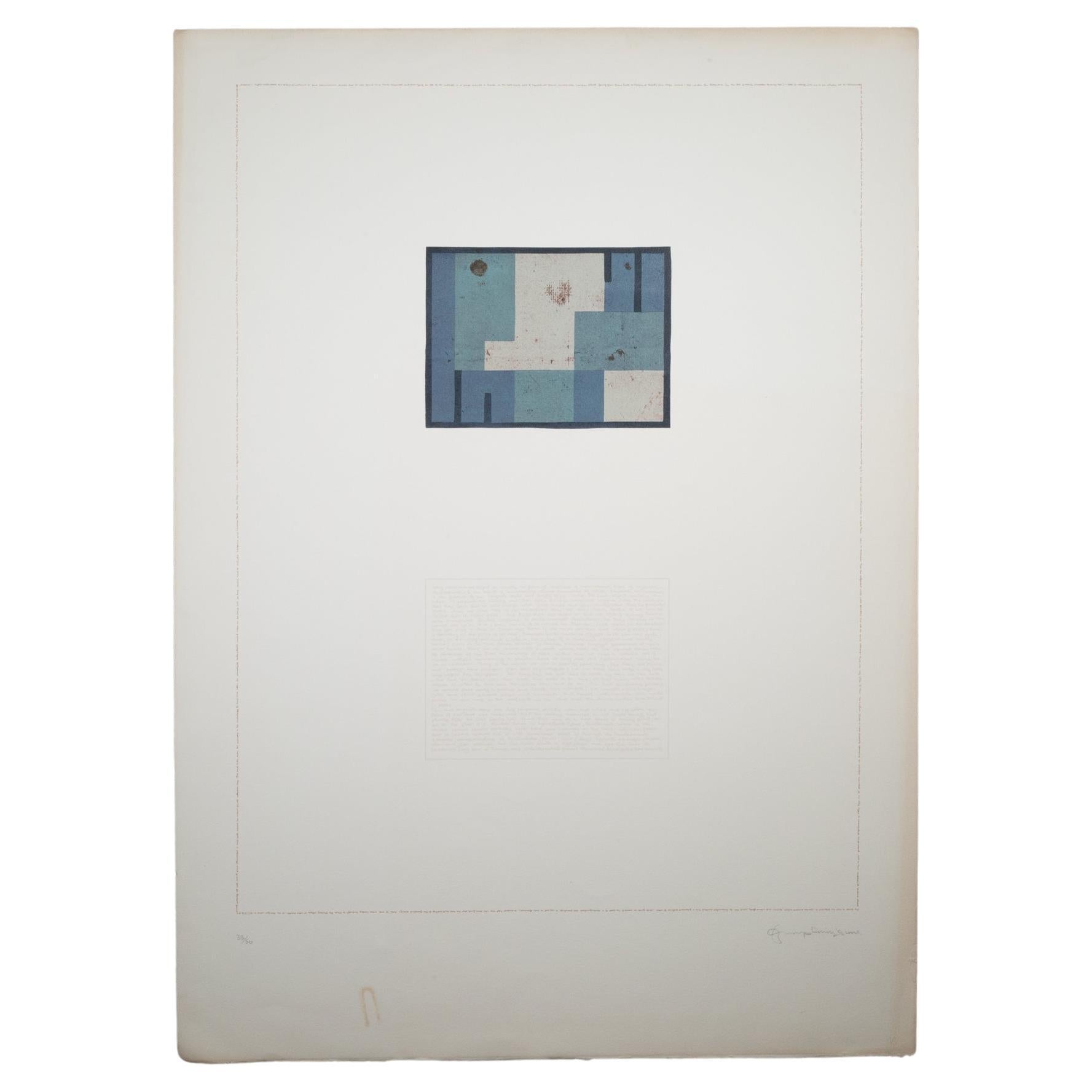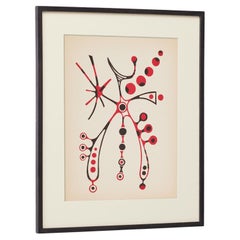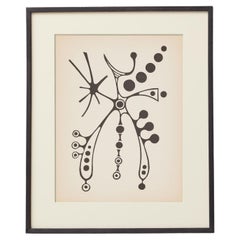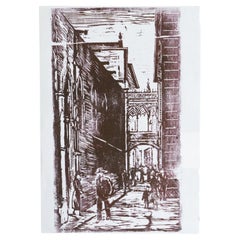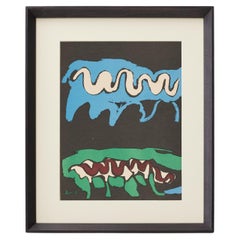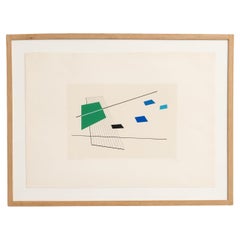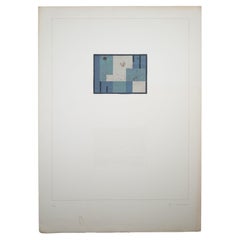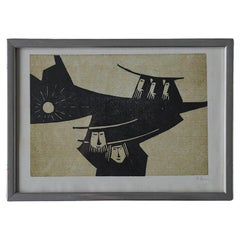Items Similar to 1961 Moisès Villèlia Linocut — “Aumun”, No. 89/100, Illustrating a Poem
Video Loading
Want more images or videos?
Request additional images or videos from the seller
1 of 16
1961 Moisès Villèlia Linocut — “Aumun”, No. 89/100, Illustrating a Poem
$818.46
$1,488.1044% Off
£608.34
£1,106.0644% Off
€687.50
€1,25044% Off
CA$1,130.06
CA$2,054.6644% Off
A$1,253.16
A$2,278.4744% Off
CHF 658.44
CHF 1,197.1644% Off
MX$15,311.44
MX$27,838.9844% Off
NOK 8,237.99
NOK 14,978.1744% Off
SEK 7,732.76
SEK 14,059.5744% Off
DKK 5,234.97
DKK 9,518.1244% Off
About the Item
1961 Moisès Villèlia Linocut — “Aumun” (Colour Variant), No. 89/100, with Alain Arias-Misson Poem, Framed & Free Worldwide Shipping
Red pulses through Villèlia’s organic lattice like blood through a capillary network: this scarce two-colour linocut—black and vermilion on warm ivory paper—updates the monochrome Aumun image with striking chromatic energy. Published in 1961 within the limited portfolio “Linóleos. Moisès Villèlia”, the print accompanied a poem by Belgian-Spanish avant-poet Alain Arias-Misson and is hand-numbered 89/100.
Technical Details
Artist Moisès Villèlia (Mataró 1928 – Barcelona 1994)
Title Aumun – Colour Variant
Date 1961
Medium Two-colour linocut (black & red) on ivory wove paper
Edition 89/100 — limited to 100 examples + proofs
Portfolio Linóleos. Moisès Villèlia (illustrating a poem by Alain Arias-Misson)
Framed size 43 h × 35.5 w × 1.3 d cm · 16.9 h × 14 w × 0.5 d in
Markings Numbered in pencil; portfolio blind-stamp in margin
Provenance Private Barcelona collection
Condition
Very good: crisp registration of both colours; faint uniform toning near sheet edges commensurate with age. No tears, creases or restorations.
Presentation
Matted in conservation off-white board and housed in a black-lacquer wooden frame. Frame pictured is a mock-up; an identical new frame will be fabricated for the buyer.
Shipping
FREE worldwide shipping via tracked, insured courier
About Moisès Villèlia
A leading figure of post-war Catalan abstraction, Moisès Villèlia moved from carved wood to ethereal sculptures in bamboo, reed and nylon, pioneering a language of weightless organic forms. Exhibitor at the 1958 Venice Biennale, he influenced Spain’s avant-garde through the 1960s-70s. His graphic works—almost always small-run linocuts—translate those spatial investigations into rhythmic, biomorphic line.
Why Collectors Want This Print
Rare colour variant—most Aumun sheets are monochrome
Limited edition 89/100
Literary collaboration with avant-poet Arias-Misson
Ready-to-hang framing & free global delivery
- Dimensions:Height: 16.93 in (43 cm)Width: 13.98 in (35.5 cm)Depth: 0.52 in (1.3 cm)
- Style:Mid-Century Modern (In the Style Of)
- Materials and Techniques:
- Place of Origin:
- Period:
- Date of Manufacture:circa 1960
- Condition:Wear consistent with age and use.
- Seller Location:Barcelona, ES
- Reference Number:1stDibs: LU9677245324242
About the Seller
5.0
Platinum Seller
Premium sellers with a 4.7+ rating and 24-hour response times
1stDibs seller since 2024
124 sales on 1stDibs
Typical response time: 11 hours
- ShippingRetrieving quote...Shipping from: Barcelona, Spain
- Return Policy
Authenticity Guarantee
In the unlikely event there’s an issue with an item’s authenticity, contact us within 1 year for a full refund. DetailsMoney-Back Guarantee
If your item is not as described, is damaged in transit, or does not arrive, contact us within 7 days for a full refund. Details24-Hour Cancellation
You have a 24-hour grace period in which to reconsider your purchase, with no questions asked.Vetted Professional Sellers
Our world-class sellers must adhere to strict standards for service and quality, maintaining the integrity of our listings.Price-Match Guarantee
If you find that a seller listed the same item for a lower price elsewhere, we’ll match it.Trusted Global Delivery
Our best-in-class carrier network provides specialized shipping options worldwide, including custom delivery.More From This Seller
View All1961 Moisès Villèlia Linocut — “Aumun”, No. 89/100, Illustrating a Poem
Located in Barcelona, ES
1961 Moisès Villèlia Linocut — “Aumun” (Plate II), No. 89/100, Illustrating a Poem by Alain Arias-Misson, Framed & Free Worldwide Shipping
Like a fossilised seed bursting with laten...
Category
Vintage 1960s Spanish Mid-Century Modern Prints
Materials
Paper
$622 Sale Price
44% Off
1961 Moisès Villèlia Linocut — “Aumun”, No. 89/100, Illustrating a Poem
Located in Barcelona, ES
1961 Moisès Villèlia Linocut — “Aumun” (Colour Variant), No. 89/100, with Alain Arias-Misson Poem, Framed & Free Worldwide Shipping
Red pulses through Villèlia’s organic lattice lik...
Category
Vintage 1960s Spanish Mid-Century Modern Prints
Materials
Paper
$818 Sale Price
44% Off
1961 Moisès Villèlia Linocut — “Aumun”, No. 89/100, Illustrating a Poem
Located in Barcelona, ES
1961 Moisès Villèlia Linocut — “Aumun”, No. 89/100, Illustrating a Poem by Alain Arias-Misson, Framed & Free Worldwide Shipping
A constellation of biomorphic nodes and tendrils unfo...
Category
Vintage 1960s Spanish Mid-Century Modern Prints
Materials
Paper
$622 Sale Price
41% Off
Mid Century Modern Linocut
Located in Barcelona, ES
Mid Century Modern Linocut
By unknown artist
In original condition with minor wear consistent of age and use.
Category
Vintage 1950s Spanish Mid-Century Modern Prints
Materials
Paper
J. Alcalde Framed Artwork, circa 1950
Located in Barcelona, ES
Vintage framed artwork, made by J. Alcalde artist. Made in Spain, circa 1950. In original condition, with minor wear consistent with age and use, preserving a beautiful patina....
Category
Vintage 1950s Spanish Mid-Century Modern Wall-mounted Sculptures
Materials
Wood, Paper
$482 Sale Price
77% Off
Elegant Intricacy: Soledad Sevilla's 'Variaciones de una línea' Aquatint
Located in Barcelona, ES
Immerse yourself in the world of elegant intricacy with "Variaciones de una línea," an aquatint on paper by Soledad Sevilla. Crafted circa 1984, this e...
Category
Vintage 1980s Spanish Mid-Century Modern Paintings
Materials
Paper
You May Also Like
Francisco Bores Original Lithograph from Verve Vol. I No. 1, Paris 1937 — Framed
Located in Barcelona, Barcelona
Original lithograph by Francisco Bores, published in the first and historic issue of Verve, Vol. I No. 1, December 1937, Éditions Verve, Paris. Executed in rich, saturated tones of b...
Category
Vintage 1930s French Mid-Century Modern Prints
Materials
Paper
$1,392 Sale Price
35% Off
Luigi Veronesi Hand-Signed and Numbered Untitled Serigraph, 1976
By Luigi Veronesi 1
Located in Barcelona, Barcelona
This elegant untitled serigraph by Italian artist Luigi Veronesi, created in 1976, is a fine example of his mastery in blending geometric abstraction with color theory. Hand-signed b...
Category
Vintage 1970s Italian Mid-Century Modern Prints
Materials
Paper
$820 Sale Price
72% Off
Tom Phillips, Linoleum, Screenprint, Limited Edition 33/50, Signed, 1976
By Tom Phillips
Located in San Francisco, CA
ABOUT
Tom Philips, Art on the Road, 1976, signed and numbered in pencil, 33/50, screenprint. Unframed.
CREATOR Tom Philips 1937-2022.
DATE OF MANUFACTURE c.1976
MATERI...
Category
Mid-20th Century American Mid-Century Modern Contemporary Art
Materials
Paper
Åke Holm, Biblical Theme, Linocut, 1970s, Framed
By Ake Holm
Located in Warszawa, Mazowieckie
Åke Holm, Biblical motif, 1970s
Linocut
The work is signed by the artist (pencil)
Work dimensions 23/32
The work is framed
Åke Holm (1900-1980) was an artist and ceramicist living i...
Category
Vintage 1970s Swedish Scandinavian Modern Decorative Art
Materials
Paper
Raquel Forner (1902–1988) modernist print signed and numbered, untitled, 1958
Located in Farmingdale, NJ
Raquel Forner (1902–1988) was an Argentine painter known for her expressionist works.
A signed and numbered print, dated 1958, signed in pencil under the printed signature. ( likely...
Category
Vintage 1950s Mid-Century Modern Prints
Materials
Paper
Åke Holm, Biblical Theme, Linocut, 1970s, Framed
By Ake Holm
Located in Warszawa, Mazowieckie
Åke Holm, Bible motif, 1970s
Linocut
Number 127/250
The work is signed by the artist and individually numbered (pencil)
Work dimensions 41/29
Framed work
Åke Holm (1900-1980) was an...
Category
Vintage 1970s Swedish Mid-Century Modern Drawings
Materials
Paper
More Ways To Browse
Foo Dog Jar
Fornasetti Frame
Franco Albini Bar Cart
Frank Lloyd Wright Stained Glass
French Art Deco Tea Pot
French Commode Demilune
French Directoire Buffet
French Elm Commode
French Herbarium
French Kitchen Hutch
French Regency Bed
French Tea Trolley
Frog Wood Sculpture
George Iii Dressing Table
Georgian Style China Cabinet
Ginger Jar Blossom
Glass Music Box
Golden Closet
